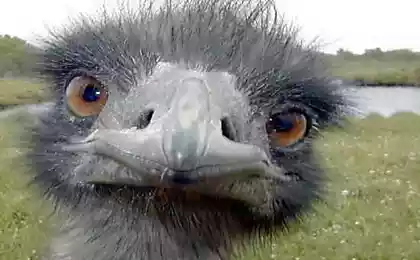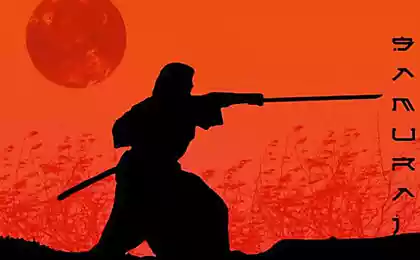1697
Soviet-Japanese War and "The August storm"
August 7, 1945 the command of the Trans-Baikal, the 1st and 2nd Far Eastern Front was the Supreme Command directive. It prescribes not start hostilities on August 11 as planned earlier, and on August 9, to perform the tasks that were set before the armed forces. And at the same time in Moscow, the Japanese ambassador was transferred to the statement of the Soviet government, which said: "due to the refusal of Japan to cease hostilities against the United States, Great Britain and China, on August 9, the Soviet Union considers itself in a state of war with Japan, which is the only way, which usher in peace, free people from further sacrifice and suffering. "
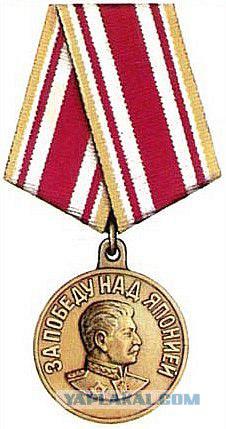
Plan Manchurian operation

The headquarters of the Kwantung Army
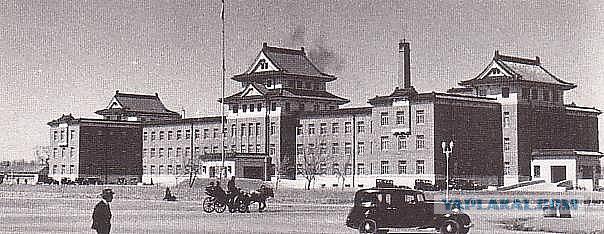
Otodzo Yamada - General of the Imperial Japanese armed forces, the commander of the Kwantung Army.
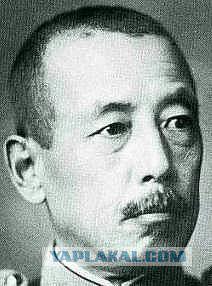
Pu Yi (02/07/1906, Beijing - 10/17/1967, Beijing, China), China's last emperor of the Manchu Qing dynasty era reign Syuantun (Universal Unity) (1908-1912).
Enthroned in a 2-year-old regent - father, Grand Prince Chun. After the revolution, Xinghai Convention and abdicated (02/12/1912). Supreme ruler of the state of Manchukuo (01/03/1932 - 01/03/1934), emperor of the Manchu empire (01.03.1934 - 08.19.1945). 08/19/1945 interned in Mukden paratroopers Zab. Front. I was in the special camp internment hands. in the village. Molokovka Chita region. (20.8 - 10/18/1945). For the first time in the "voluntary oral evidence", he said: "We knew that owls. Union is not an aggressive country and were confident that he would not transform Manchuria into a colony, as it did with the Japanese in our country in 1931-1932 years. ". On 10.21.1945 in the special camp near Khabarovsk. Served Ch. witness for the prosecution at the meetings of the International Military Tribunal for the Far East (1946-1948). 03.08.1950 passed the PRC. While in prison for war criminals in Fushun (1950-1959). From April. 1962 Deputy of National People's Political Consultative Conference.

Aleksandr Vasilevsky Chief of Soviet troops in the Far East in the war with Japan.

He.
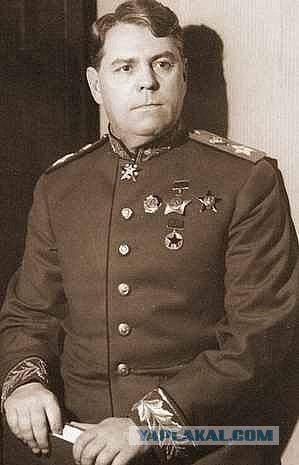
A Soviet officer in the light tank T-26. Meeting in one of the armored units before the war with Japan

Plaine offensive

The movement of Soviet infantry in the steppes of Manchuria. Trans-Baikal Front, August 1945. Photo G.Samsonova Many preserved pre-war helmet. If I am not mistaken, they were called "Khalkhyn Gorki»

Soviet troops crossed the border of Manchuria. August 9, 1945

Transport ships with the Soviet paratroopers moving to the South Sakhalin.
August 1945

For example, memory)

inspection of captured tanks

Tankers overcome Greater Khingan Range. Manchuria, August 1945.

The crew of a Soviet bomber Pe-2 Congratulations on the successful performance of combat missions. 1st Far Eastern Front.
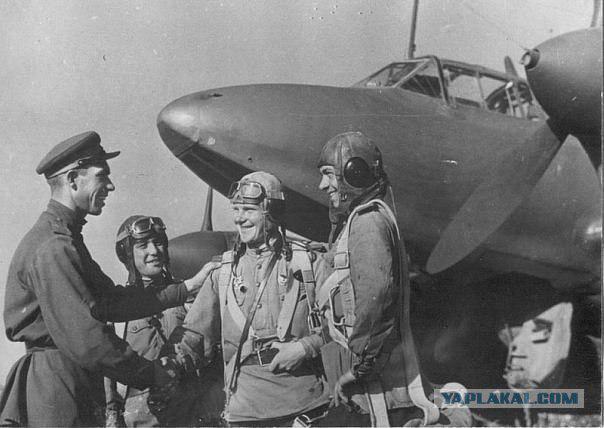
Japanese surrenders

Letting prisoners weapons

The soldiers on the throne Chinese Emperor Pu Yi of Manchuria. September 1945

Column T-34-85 of the 6th Guards Tank Army on the streets of Shenzhen.
August 24, 1945

T-34-85 in a battle in the southern Sakhalin. August 1945

The Chinese population of the city of Far happily greets Soviet tank. August 1945

Photo rekolor

The commander of the tank T-34 Lieutenant Pavel Fedorovich Kachanov.
The signature on the back of the photo: "photographed in the days of the liberation of Manchuria. Mr. Ningan, October 1945 »
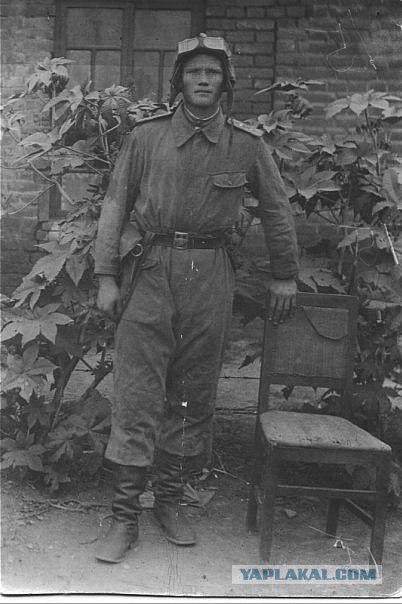
Representative of the USSR KN Derevianko puts his signature on the act of surrender of Japan

Japanese representatives

Soviet and American sailors celebrating the capitulation of Japan (Alaska, USA)

Liver BT-7 at the parade in honor of the Japanese surrender
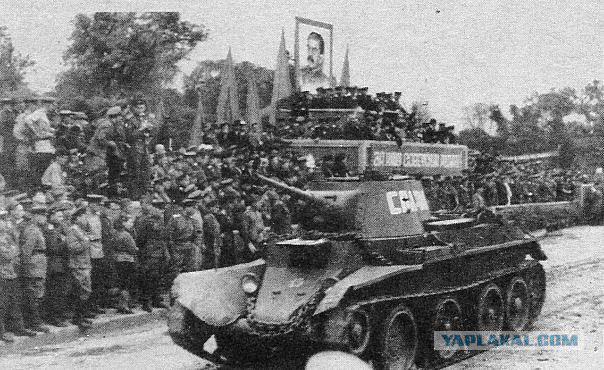
The monument in Ulan Bator, in honor of the Soviet-Mongolian victory over Japan

Samurai seppuku)))

Crossing the Gobi Desert

"And in the Pacific ended his campaign ...»

Soviet motorcyclists off the coast of the Pacific Ocean

The infantry under cover of tanks in the offensive
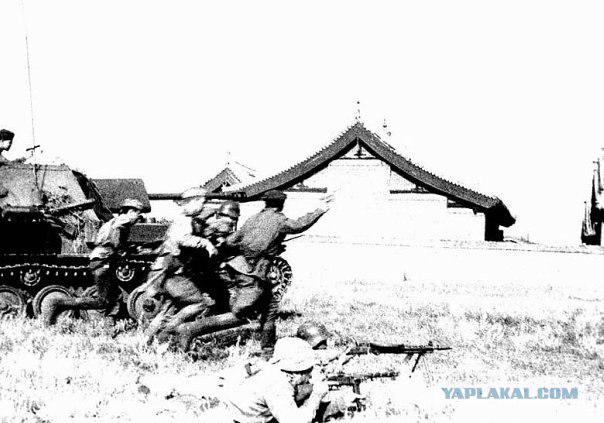
Soviet troops marching through the streets of the city of Changchun
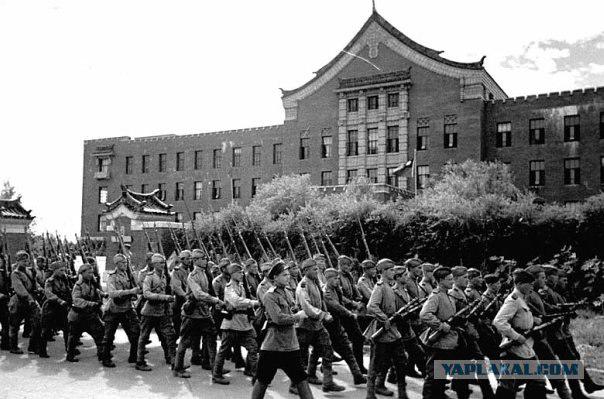
Lieutenant General V.Kulik and Major-General A. Sokolov on the shore of the Chinese Communist r.Mudantszyan

Japanese officers out of the entrance of the Kwantung Army

Soviet sailors in Port Arthur

The evacuation of prisoners to the rear of the Japanese Kwantung Army generals Soviet troops

Soviet soldiers in Korea. October 1945.
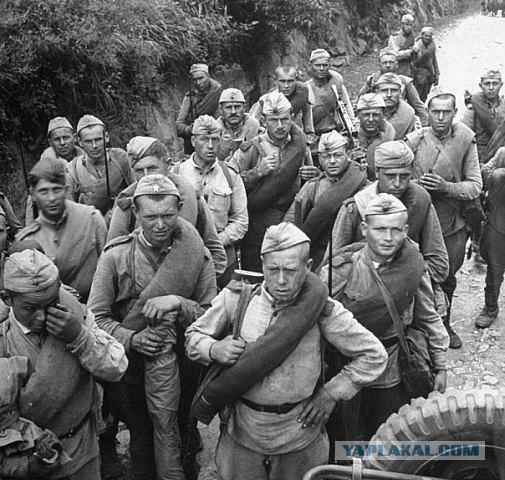
distribution of rice to the Japanese prisoners

Street fighting in Chongjin

The arrest of the Kwantung Army (Yamada arrested and Hata), Chang Chun-1945

Defendant Otozoo General Yamada, former commander of the Kwantung Army, says the last word
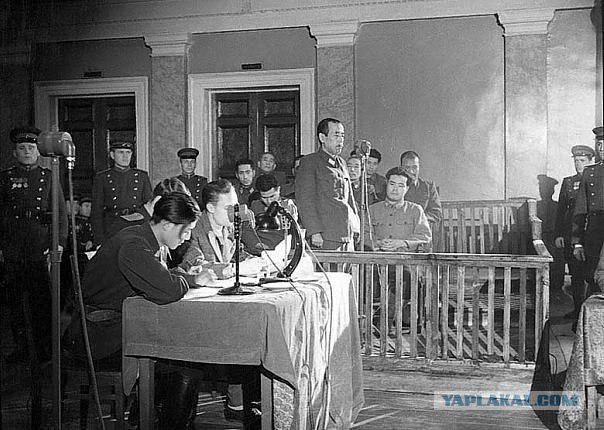
trophies

Exhibition of captured Japanese military equipment. Park of Culture and Rest. Gorky

Missouri enters Japanese waters. It will be signed the capitulation of Japan

Soviet military representatives during the presentation of the ultimatum of surrender of the commander in chief of the Kwantung Army Yamada O. (third from right). Changchun, August 1945

Soviet troops take town northeast of Pyongyang
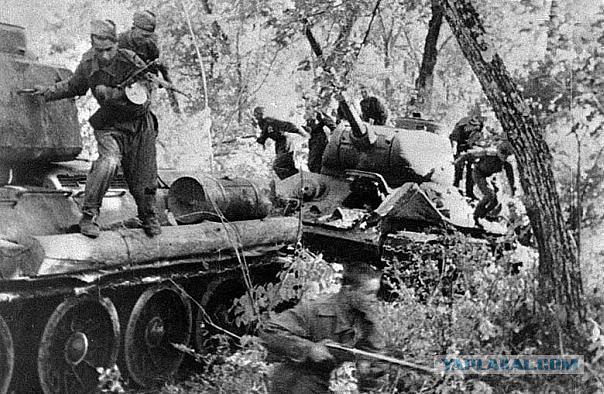
Japanese envoys

The supreme command staff headed by K.A.Meretskovym examines the broken Japanese pillboxes near g.Hutou
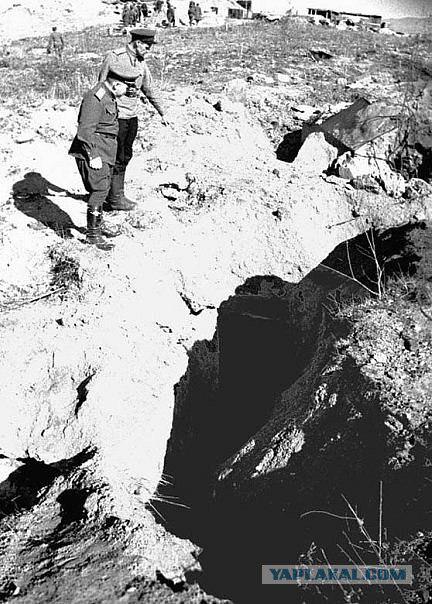
The act of surrender of Japan
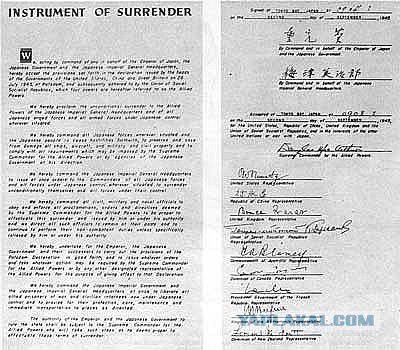
Participants signing of the Japanese surrender: Hsu Yung-chang (China), B.Freyzer (UK) K.N.Derevyanko (USSR), T.Bleymi (Australia), L.M.Kosgreyv (Canada), Zh.Leklerk (France)

At the trial of former soldiers of the Japanese army, the accused in the preparation and application of bacteriological weapons in the dock (the first number) Mitomo, Kawashima, Hirazakuma, Yamada

The theme

Also in the topic)

Again a little)
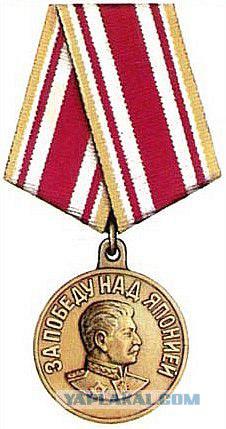
Yasukuni Shrine, the main pantheon militaristic Yaponii.Tablichki data heroes who died for the Emperor according traditsii.Vysshey samurai honor for a Japanese soldier was considered to be listed in the ranks of those at the Yasukuni shrine.

Japanese anti-aircraft acoustic tube.
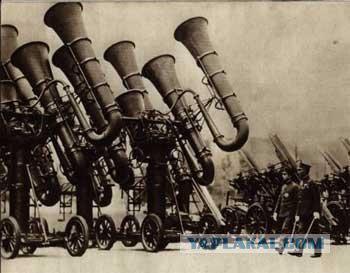
Heavies

Japanese engineer vehicle

Marine Corps (ryukyusentay) landed on the island in the Pacific Ocean.
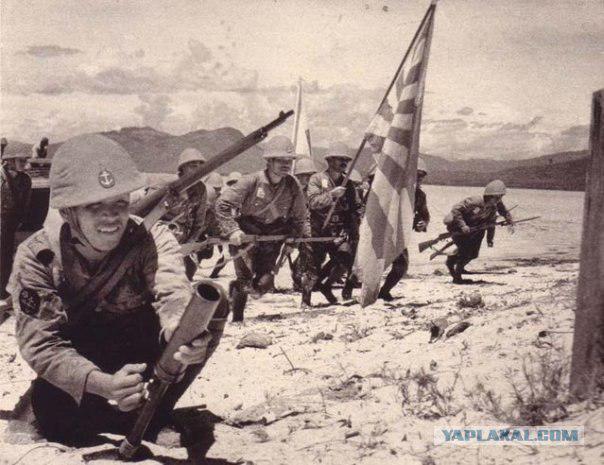
Japanese Marine.

Military training of Japanese monks.

General Yamashita.
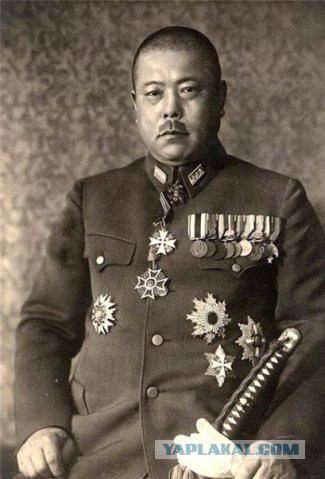
Soldiers and officers who have made themselves sepukku (hara-kiri) in Okinawa.

Soldier zakolovshy themselves shtykom.Filippiny, 1944

Pilot Anabuki Satoshi, who won more than 50 aerial victories.
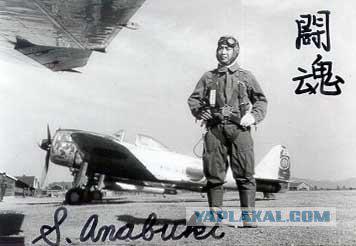
Group Shot 6 kamikaze pilots with samurai mechami.K clothes tag attached to personal dannymi.Takie pictures were taken before the last flight.

Installing anti stakes in Birme.Chasto such stakes to reinforce the harmful effect of smearing poison snakes, rancid animal fat or even their own excrement.

Children from an early age accustomed to uniforms, army regulations, and the samurai tradition.

Source:

Plan Manchurian operation

The headquarters of the Kwantung Army

Otodzo Yamada - General of the Imperial Japanese armed forces, the commander of the Kwantung Army.

Pu Yi (02/07/1906, Beijing - 10/17/1967, Beijing, China), China's last emperor of the Manchu Qing dynasty era reign Syuantun (Universal Unity) (1908-1912).
Enthroned in a 2-year-old regent - father, Grand Prince Chun. After the revolution, Xinghai Convention and abdicated (02/12/1912). Supreme ruler of the state of Manchukuo (01/03/1932 - 01/03/1934), emperor of the Manchu empire (01.03.1934 - 08.19.1945). 08/19/1945 interned in Mukden paratroopers Zab. Front. I was in the special camp internment hands. in the village. Molokovka Chita region. (20.8 - 10/18/1945). For the first time in the "voluntary oral evidence", he said: "We knew that owls. Union is not an aggressive country and were confident that he would not transform Manchuria into a colony, as it did with the Japanese in our country in 1931-1932 years. ". On 10.21.1945 in the special camp near Khabarovsk. Served Ch. witness for the prosecution at the meetings of the International Military Tribunal for the Far East (1946-1948). 03.08.1950 passed the PRC. While in prison for war criminals in Fushun (1950-1959). From April. 1962 Deputy of National People's Political Consultative Conference.

Aleksandr Vasilevsky Chief of Soviet troops in the Far East in the war with Japan.

He.

A Soviet officer in the light tank T-26. Meeting in one of the armored units before the war with Japan

Plaine offensive

The movement of Soviet infantry in the steppes of Manchuria. Trans-Baikal Front, August 1945. Photo G.Samsonova Many preserved pre-war helmet. If I am not mistaken, they were called "Khalkhyn Gorki»

Soviet troops crossed the border of Manchuria. August 9, 1945

Transport ships with the Soviet paratroopers moving to the South Sakhalin.
August 1945

For example, memory)

inspection of captured tanks

Tankers overcome Greater Khingan Range. Manchuria, August 1945.

The crew of a Soviet bomber Pe-2 Congratulations on the successful performance of combat missions. 1st Far Eastern Front.

Japanese surrenders

Letting prisoners weapons

The soldiers on the throne Chinese Emperor Pu Yi of Manchuria. September 1945

Column T-34-85 of the 6th Guards Tank Army on the streets of Shenzhen.
August 24, 1945

T-34-85 in a battle in the southern Sakhalin. August 1945

The Chinese population of the city of Far happily greets Soviet tank. August 1945

Photo rekolor

The commander of the tank T-34 Lieutenant Pavel Fedorovich Kachanov.
The signature on the back of the photo: "photographed in the days of the liberation of Manchuria. Mr. Ningan, October 1945 »

Representative of the USSR KN Derevianko puts his signature on the act of surrender of Japan

Japanese representatives

Soviet and American sailors celebrating the capitulation of Japan (Alaska, USA)

Liver BT-7 at the parade in honor of the Japanese surrender

The monument in Ulan Bator, in honor of the Soviet-Mongolian victory over Japan

Samurai seppuku)))

Crossing the Gobi Desert

"And in the Pacific ended his campaign ...»

Soviet motorcyclists off the coast of the Pacific Ocean

The infantry under cover of tanks in the offensive

Soviet troops marching through the streets of the city of Changchun

Lieutenant General V.Kulik and Major-General A. Sokolov on the shore of the Chinese Communist r.Mudantszyan

Japanese officers out of the entrance of the Kwantung Army

Soviet sailors in Port Arthur

The evacuation of prisoners to the rear of the Japanese Kwantung Army generals Soviet troops

Soviet soldiers in Korea. October 1945.

distribution of rice to the Japanese prisoners

Street fighting in Chongjin

The arrest of the Kwantung Army (Yamada arrested and Hata), Chang Chun-1945

Defendant Otozoo General Yamada, former commander of the Kwantung Army, says the last word

trophies

Exhibition of captured Japanese military equipment. Park of Culture and Rest. Gorky

Missouri enters Japanese waters. It will be signed the capitulation of Japan

Soviet military representatives during the presentation of the ultimatum of surrender of the commander in chief of the Kwantung Army Yamada O. (third from right). Changchun, August 1945

Soviet troops take town northeast of Pyongyang

Japanese envoys

The supreme command staff headed by K.A.Meretskovym examines the broken Japanese pillboxes near g.Hutou

The act of surrender of Japan

Participants signing of the Japanese surrender: Hsu Yung-chang (China), B.Freyzer (UK) K.N.Derevyanko (USSR), T.Bleymi (Australia), L.M.Kosgreyv (Canada), Zh.Leklerk (France)

At the trial of former soldiers of the Japanese army, the accused in the preparation and application of bacteriological weapons in the dock (the first number) Mitomo, Kawashima, Hirazakuma, Yamada

The theme

Also in the topic)

Again a little)

Yasukuni Shrine, the main pantheon militaristic Yaponii.Tablichki data heroes who died for the Emperor according traditsii.Vysshey samurai honor for a Japanese soldier was considered to be listed in the ranks of those at the Yasukuni shrine.

Japanese anti-aircraft acoustic tube.

Heavies

Japanese engineer vehicle

Marine Corps (ryukyusentay) landed on the island in the Pacific Ocean.

Japanese Marine.

Military training of Japanese monks.

General Yamashita.

Soldiers and officers who have made themselves sepukku (hara-kiri) in Okinawa.

Soldier zakolovshy themselves shtykom.Filippiny, 1944

Pilot Anabuki Satoshi, who won more than 50 aerial victories.

Group Shot 6 kamikaze pilots with samurai mechami.K clothes tag attached to personal dannymi.Takie pictures were taken before the last flight.

Installing anti stakes in Birme.Chasto such stakes to reinforce the harmful effect of smearing poison snakes, rancid animal fat or even their own excrement.

Children from an early age accustomed to uniforms, army regulations, and the samurai tradition.

Source:




